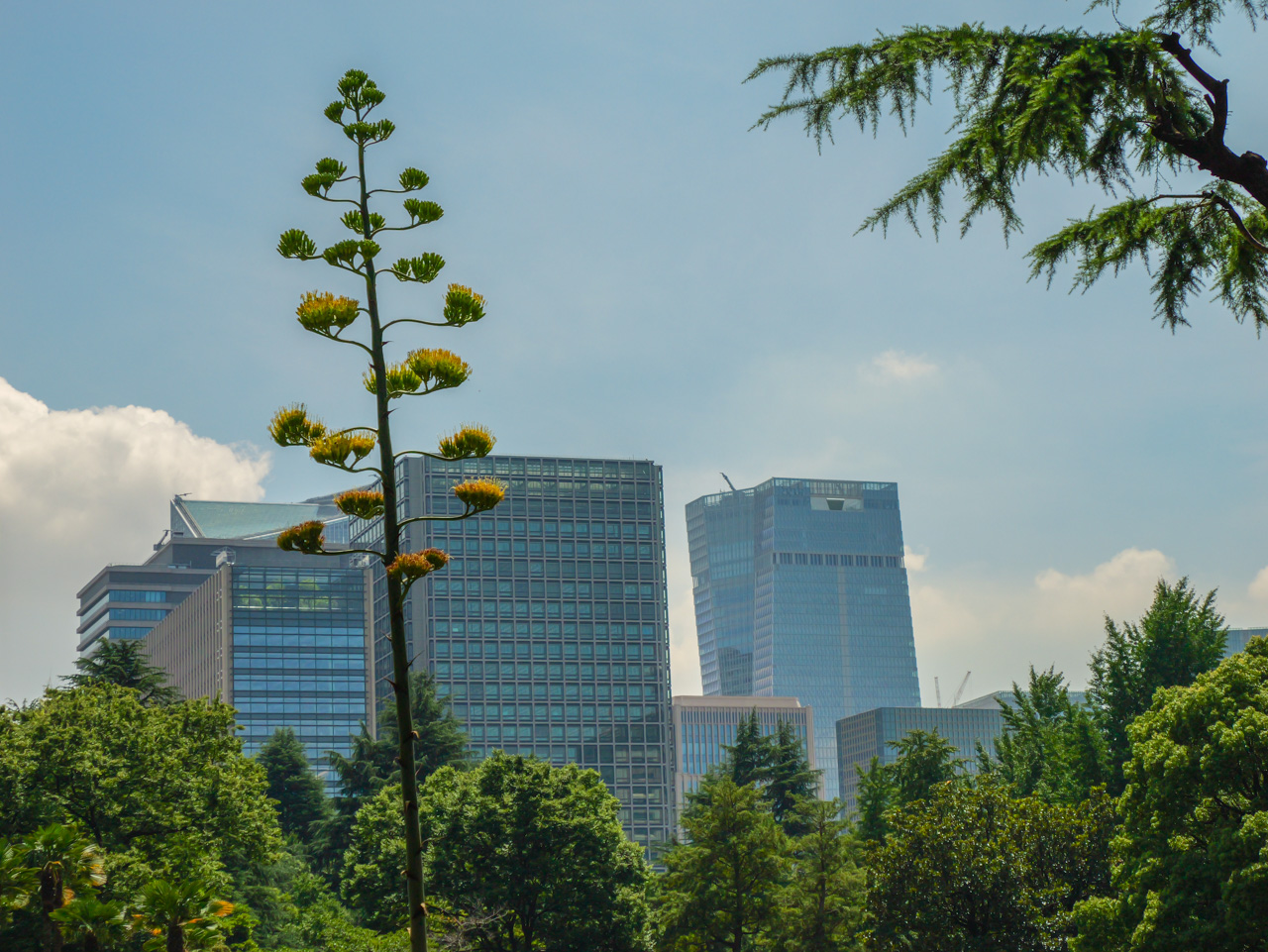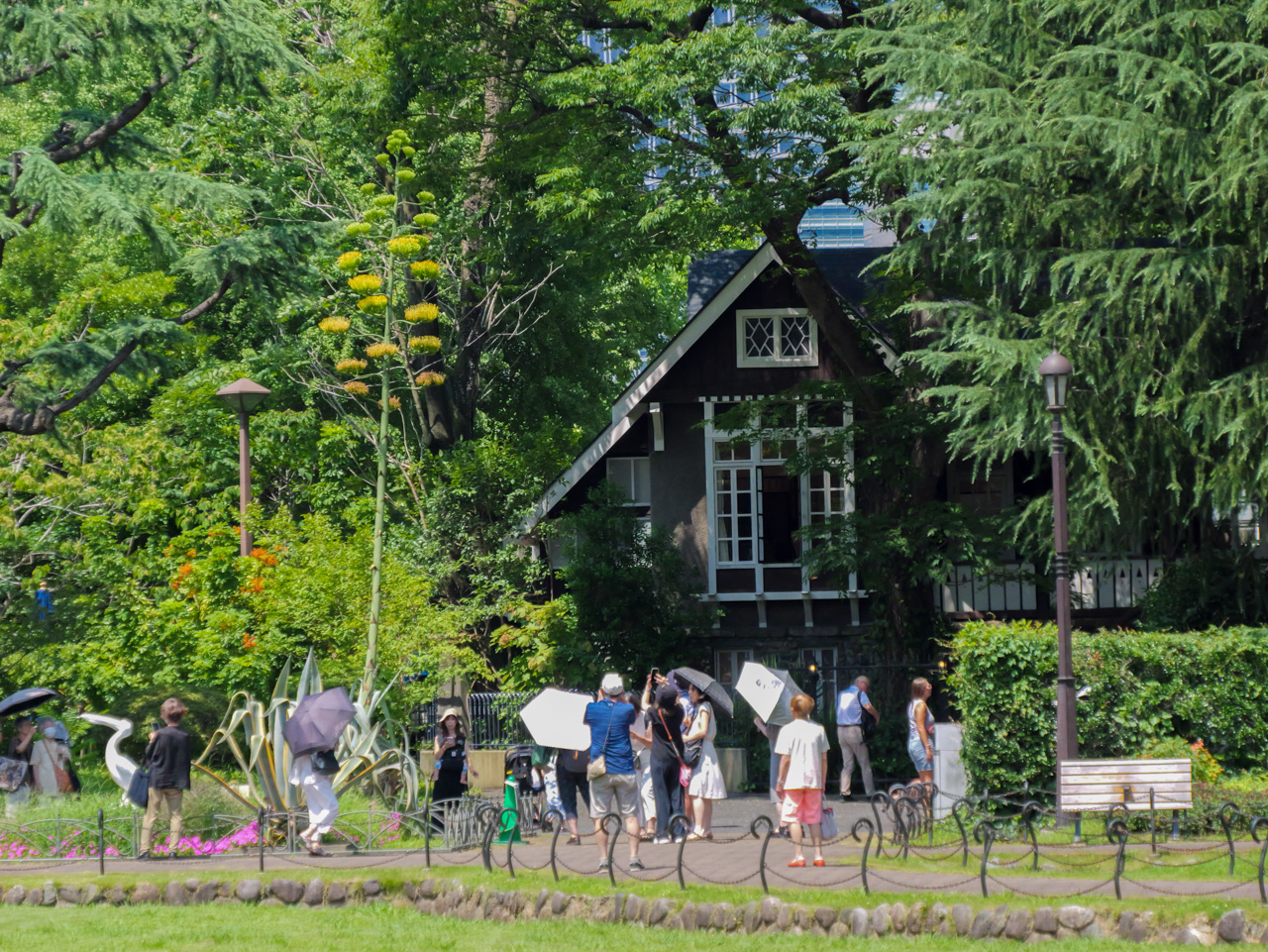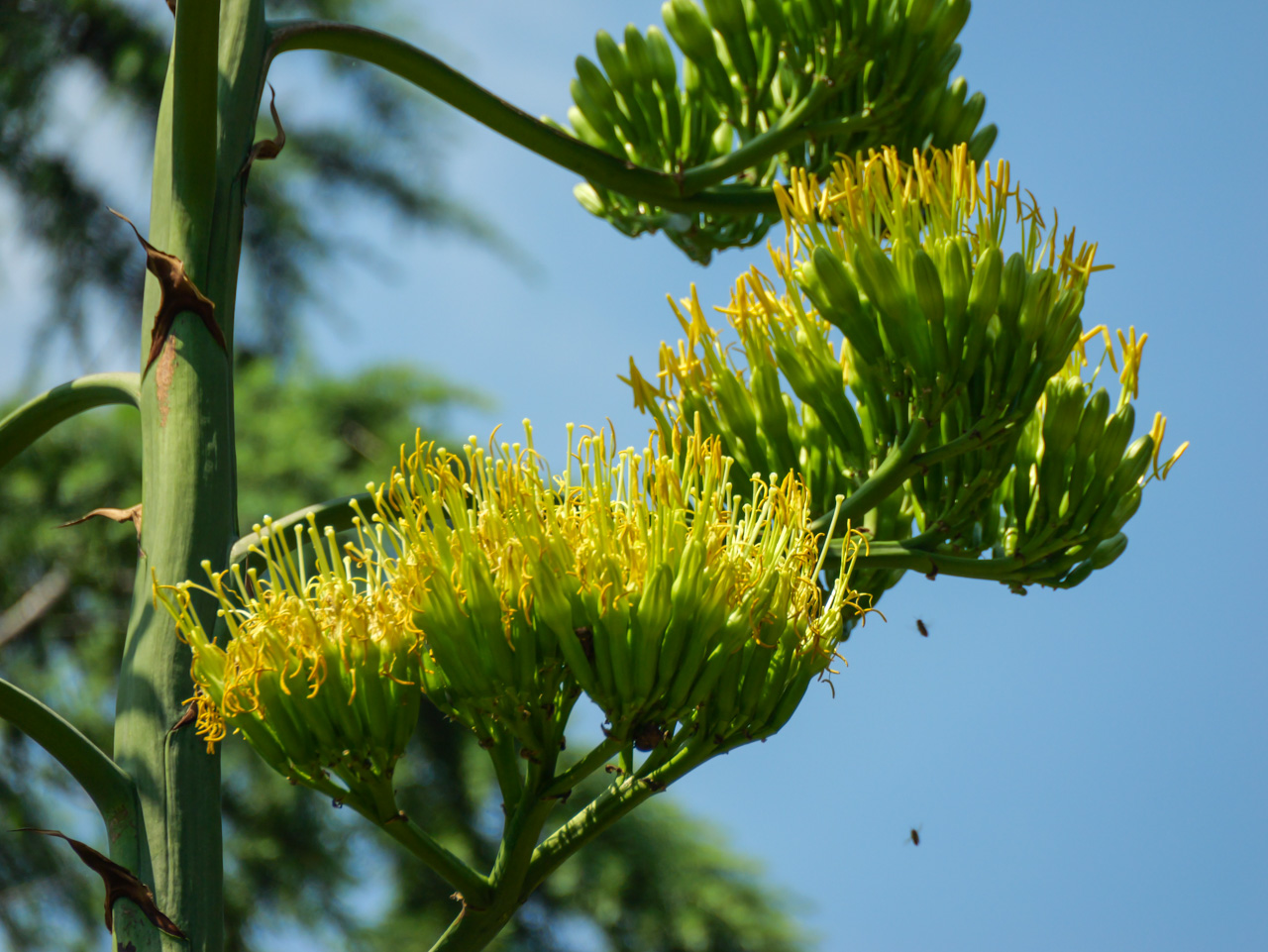Once-in-a-century flower blooms in Hibiya Park

In Tokyo’s Hibiya Park, a close neighbor of the Imperial Palace, there is a large agave that is planted next to the pelican fountain. It’s not your usual garden variety, but a special type called agave americana, also known as the “century plant”. It is said that this type blooms only once in 100 years. It is a native of Mexico and southern part of the United States, specifically Texas. Back in May, a park staff member noticed that its center stem was growing. Since this happens so rarely, the staff had never witnessed this before. In July, it was confirmed that the plant is indeed blooming. Locals and tourists alike started flocking to the park to catch a glimpse of the rare event.
Today, on this incredibly hot and humid day, I went there to photograph it. It stands prominently right next to the fountain, and it is easy to see it from afar. It’s a very tall plant, now measuring 7.7 meters. As I mentioned, it is said to bloom once in 100 years, but a more scientific estimate is that it blooms only once in its life, after about 10 to 30 years of growth on average (which is still a respectable amount of time!). Once it flowers, the main plant dies, but it often produces offshoots or “pups” that continue to grow. According to the news, this particular one in Hibiya Park is more than 60 years old, because there are photos of it that were taken around 1960. Such a long lifespan is quite rare.

